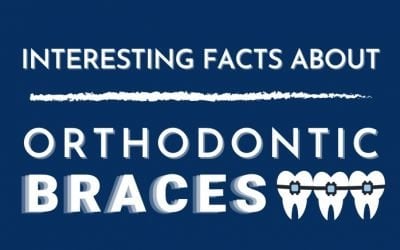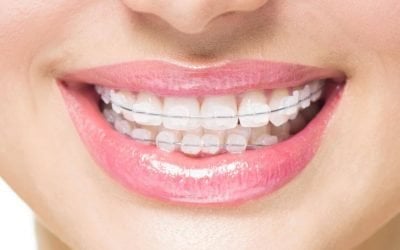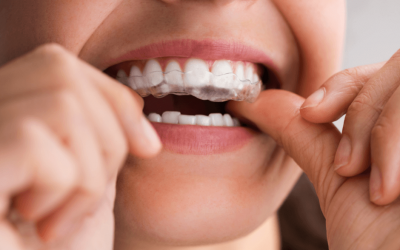Metal Braces: Does This Traditional Dental Technology Have a Future?

Of all the medical professions, dentistry has always generated the most fear and continues to; despite the phenomenal advances that give painless precision to the human story of solving the medical and practical problems of teeth. The evolution of dentistry is also its crucial history of having dentists be acceptable to the middle-classes, moving the idea away from the medieval charlatan in the town square, holding a bloody tooth in a pair of pliers.
From those beginnings is the respectful, expert, professional with techniques to assuage phobias and anxieties in order to improve wellbeing, and quality of life in other people.
If only the same could be said of world leaders and politicians.
Even the founder of modern scientific dentistry, Pierre Fauchard (1690-1761) in his celebrated 1728 work, Le Chirurgien Dentiste, stated that, “…one should always take the precaution of hiding the instruments from the patient’s sight, especially in the case of extracting a tooth, so as not to terrify him.”
Aspects of early dentistry were surprisingly sophisticated. A lot of Roman prosthetics survive because of the tradition of removing everything from the body prior to cremation to be reunited with the ashes.
From ancient Roman and Indian cultures comes evidence of reasonably elegant dentures; what modern dentistry call a bridge, clipped or wired to surrounding teeth. They’re certainly sophisticated in terms of not only a practical problem but an aesthetic one. So much of it is about appearance – not only the restoration to a functioning mouth, but the reinstatement of beauty and respectability.
Teeth. A many splendoured thing. For the Chinese as well: nine types of toothache were identified by them, and acupuncture formed an integral part of dental treatments.
For a long time, like a surgeon, becoming a dentist was an apprenticeship in the same way as a butcher, baker or a candlestick maker. It was learned through experience and tacit knowledge, rather than higher education.
It’s striking that the instruments haven’t changed enormously; along with various procedures that have ultimately guided the destiny of dentistry, included in early documentation as: “Cleaning the teeth, separating them, shortening them, removing the caries, cauterizing, stopping, straightening crooked teeth, steadying loose teeth, trepanning, simple drawing of teeth, replacing them in their own alveoli, or transplanting them to another mouth, and finally substituting artificial teeth for those wanting.”
It was also Frenchman Fauchard who insisted that, “All these operations require in him who carries them out a light, secure, and skilful hand and a perfect theoretic knowledge, by which he may decide on the opportuneness of performing them, of deferring them, or of abandoning them altogether. “
Howzat? An 18th century mouth already in dereliction risking abandonment by the only person who can help. Early dentists were brave, certainly; undoubtedly though, it was the patients with true courage.
And more truth – George Washington’s dentist John Greenwood didn’t give him wooden teeth.
Washington was walking around with almost the history of America in his mouth, by his later years. Walrus ivory was one of the most common materials for false teeth at the time, a by-product of the Greenland whaling trade. There was a kind of exploitation of world resources going on, including “Waterloo Teeth.”
The idea, after the Battle of Waterloo in 1815, was to make dentures from the teeth of the thousands of soldiers killed on the battlefield, so people could proudly walk around with fresh healthy hero choppers. It was the rip-off marketing routine of its day because there was no reason to go all the way to a war zone for teeth when every undertaker and morgue had a decent supply of dead bodies. So much so, in fact, that the only guarantee of having a mouthful of dead soldiers was by eating all the toast fingers on your plate.
With the teeth of an outcast you have there …

Washington’s dentures were partly made from silver as well – from the great Potosi mine of the Cerro Rico Mountain in the Bolivian Tin Belt, the largest silver deposit in the world; producing 37,000 tonnes of it over two hundred years from 1545. So while George Washington was walking around with a history of his times in his mouth, his chronic dental issues would have certainly had some impact on the outcome of the American Revolution. Teeth already had: Civil War soldiers needed at least two opposing front teeth to open gunpowder flasks, resulting in some front teeth extraction in order to avoid service.
Fifty years ago, if you were asked to think about braces the image that came to mind was ‘train tracks’ – the classic metal wires across the front of the teeth and source of dread for every already awkward teenager facing teeth straightening treatment.
Although detailed and extensive research into orthodontics is available from the 1770s the term ‘braces’ wasn’t coined until 1900. Both The Surgeon Dentist (1775) and The Dentist’s Art (1839) have dedicated chapters exploring the art of aligning teeth.
Advancements such as wire cribs, gum elastics, and X-rays had been developed up until 1890, and all led to dramatic breakthroughs during the 20th century in orthodontic procedures.
That in itself has it seem that traditional dental technology is always its future.
Metal braces have come a long way since you (or your parents) were a kid. In the past braces were bulkier and more uncomfortable than they are now. Modern brackets are much smaller than they used to be, and in the case of self-ligating braces, they don’t require additional wiring or elastics to hold them in place.
Already, there’s technology to shorten treatment time by as much as half, within just a decade. The difference in the last fifty years means that within the next fifty, dental technology may shorten treatment exponentially; it may be possible to straighten teeth in weeks rather than years.
With the emergence of clear and tooth-coloured braces, it’s reasonable to consider them the cassette of dentistry – and only because you’ve forgotten the comeback they’re currently making. Tapes are more widely available than they have been in decades, with increasingly high quality.
So metal braces are like tapes: not only far from obsolete, they actually have some advantages over other orthodontic options.
The technology for straightening teeth itself is likely to change drastically too. Systems might become so advanced, nothing is actually attached to teeth in order to straighten them.
Significant gaps, intricate bite issues, or teeth that are severely tipped or rotated, are better resolved with traditional braces or to correct minor crowding, traditional braces can do it all … and often sooner and more affordably. Metal braces move teeth more efficiently than aligners because of the greater control of movement and the increased force your orthodontist can apply.
Ultimately, your orthodontist will recommend your best treatment options based on your specific dental needs. If it happens to be metal braces and you’re not in love with the idea, think of this: the transition from ignorance, misapprehension and superstition, to the enlightened and nerve-deadened protocols of orthodontistry has been a long process that allows you the temporary inconvenience of wearing braces for a beautiful, healthy smile in your future.
DISCLAIMER:
The content has been made available for informational and educational purposes only. Central Coast Orthodontics does not make any representation or warranties with respect to the accuracy, applicability, fitness, or completeness of the content.
The content is not intended to be a substitute for professional personal diagnosis or treatment. Always seek the advice of your dentist or another qualified health provider with any questions you may have regarding a dental or medical condition. Never disregard professional advice or delay seeking it because of something you have read or seen on the Site.
Learn More About
Related Articles
Interesting Facts About Orthodontic Braces
Wanting to get orthodontic braces but feeling unsure because you don't have knowledge about its...
Three Benefits of Invisalign
Did you know that aside from being an option for straightening your teeth, there are also benefits...
Ceramic Braces: Ancient Origins, Bright Future?
What exactly is ceramic? Essential to daily life and classified as inorganic and non-metallic...
Can Children Have Clear Aligner Treatment?
When it comes to orthodontic treatment, patients are spoiled for choice. While traditional braces are still the most common form of correct…







